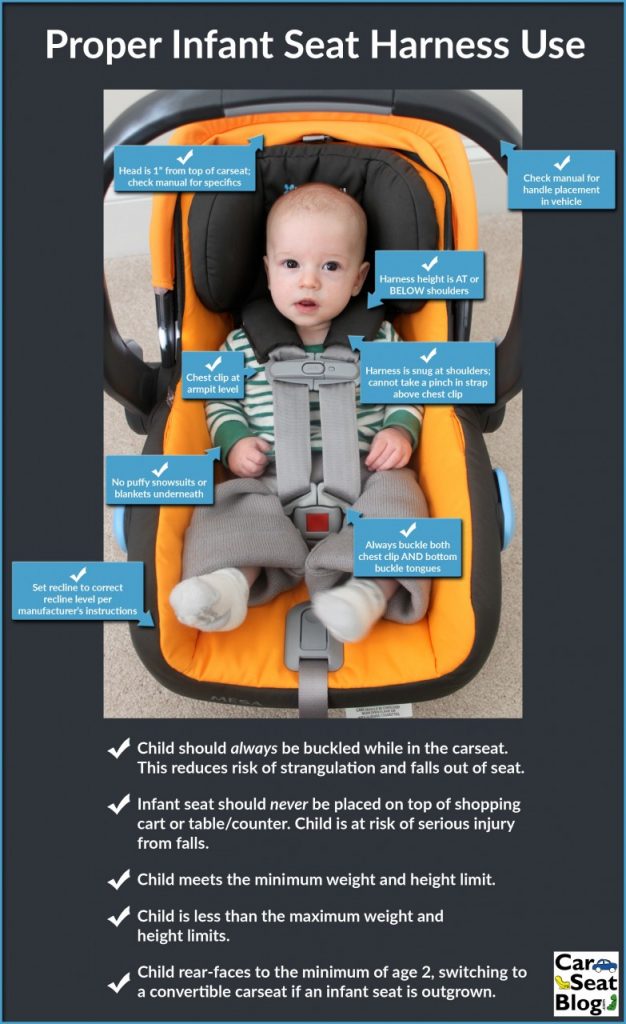Mythbusting: Your Pediatrician is a Car Seat Expert

![]()
![]()
![]()
![]()
![]()
Myth: Your Pediatrician is educated on child passenger safety issues and is a good source of information on the subject.
 In the many years that I’ve been involved in the child passenger safety field, one of the most common reasons I’ve heard for turning children forward-facing early or moving them out of a booster seat too soon is “my pediatrician said it was fine.” So I thought maybe it would be good to look at whether a pediatrician is a good source of car seat information.
In the many years that I’ve been involved in the child passenger safety field, one of the most common reasons I’ve heard for turning children forward-facing early or moving them out of a booster seat too soon is “my pediatrician said it was fine.” So I thought maybe it would be good to look at whether a pediatrician is a good source of car seat information.
Now, let’s be clear, I love pediatricians. I married a pediatrician. I don’t want, for even an instant, to imply that physicians are anything other than extraordinary human beings. I just want to delve into whether our pediatricians are generally a good source of information on car seat safety.
First, let’s look at medical school education. The first 2 years of medical school are spent in classrooms listening to lectures, memorizing information and taking absurdly difficult tests. The second 2 years are where med students do rotations in clinics and hospitals and look really scared a lot (I kid, I kid).
The curriculum in the first two years includes: gross anatomy, developmental anatomy, radiographic anatomy, histology, biochemistry, genetics, neuroanatomy, neurophysiology, immunology, pharmacology, ethics, nutrition and often an elective or two. Looking closely at that list, while they are learning about a lot of the principles that our car seat knowledge and decisions are based upon, there’s not any actual education on car seats in medical school.
So maybe residency then?
A general pediatrics residency lasts 3 years and includes insanely long hours and a lot of very hard work. These 3 years are divided into hospital and clinic-based work where most learning is done through hands-on experience and then hours of journal and text reviewing at home. During a pediatrics residency, the resident will spend weeks/months in most major specialties including (but not limited to) pediatric neurology, immunology, pulmonology, cardiology, intensive care, gastroenterology, etc.
The American Board of Pediatrics does provide a single line about car seats in the learning specifications for pediatric residents. It states that they should be able to “recommend appropriate car restraint systems, including car seats, based on age and weight of the child, including those appropriate for premature infants.” It should be noted that this is a single line in an 80-page document of learning objectives, so while it’s there, it’s not a significant portion of the education of a resident.
I think it’s also important to note that outside of CPST training, there really isn’t a class that residents can take to learn about this. There typically aren’t talks about it at conferences or other frequent opportunities to be educated about it, so many times these physicians are looking at the exact same sources that parents are. I know that my husband never received any training in car seats in his residency and that my research on car seats was essentially the first he had ever heard about rear-facing beyond infancy. While child passenger safety is undeniably important for pediatricians and their patients, it is not medicine and it’s understandably not their area of focus.
Notably, the AAP (American Academy of Pediatrics) does have an updated policy statement on car seat usage, which is pretty much what your pediatrician should be telling you about car seats, if anything. The most recent revision, from 2018, states:
“Infants and toddlers should ride in a rear-facing car safety seat (CSS) as long as possible, until they reach the highest weight or height allowed by their CSS’s manufacturer. Most convertible seats have limits that will permit children to ride rear-facing for 2 years or more. Children who have outgrown the rear-facing weight or height limit for their CSS should use a forward-facing CSS with a harness for as long as possible, up to the highest weight or height allowed by their CSS’s manufacturer. Children whose weight or height is above the forward-facing limit for their CSS should use a belt-positioning booster seat until the vehicle lap and shoulder seat belt fits properly, typically when they have reached 4 ft 9 inches in height and are between 8 and 12 years of age.”
CONFIRMED, PLAUSIBLE OR BUSTED? With the exception of a few wonderful CPST-Pediatrician hybrids, this myth is BUSTED.
Pediatricians are hardworking, intelligent people and outstanding sources of information on myriad topics related to your child(ren), but when you need specific safest practice information on car seats and boosters, NHTSA, Safe Kids, CarseatBlog.com, or a local CPS Technician are usually much better options.

![]()
![]()
![]()
![]()
![]()
![]()







